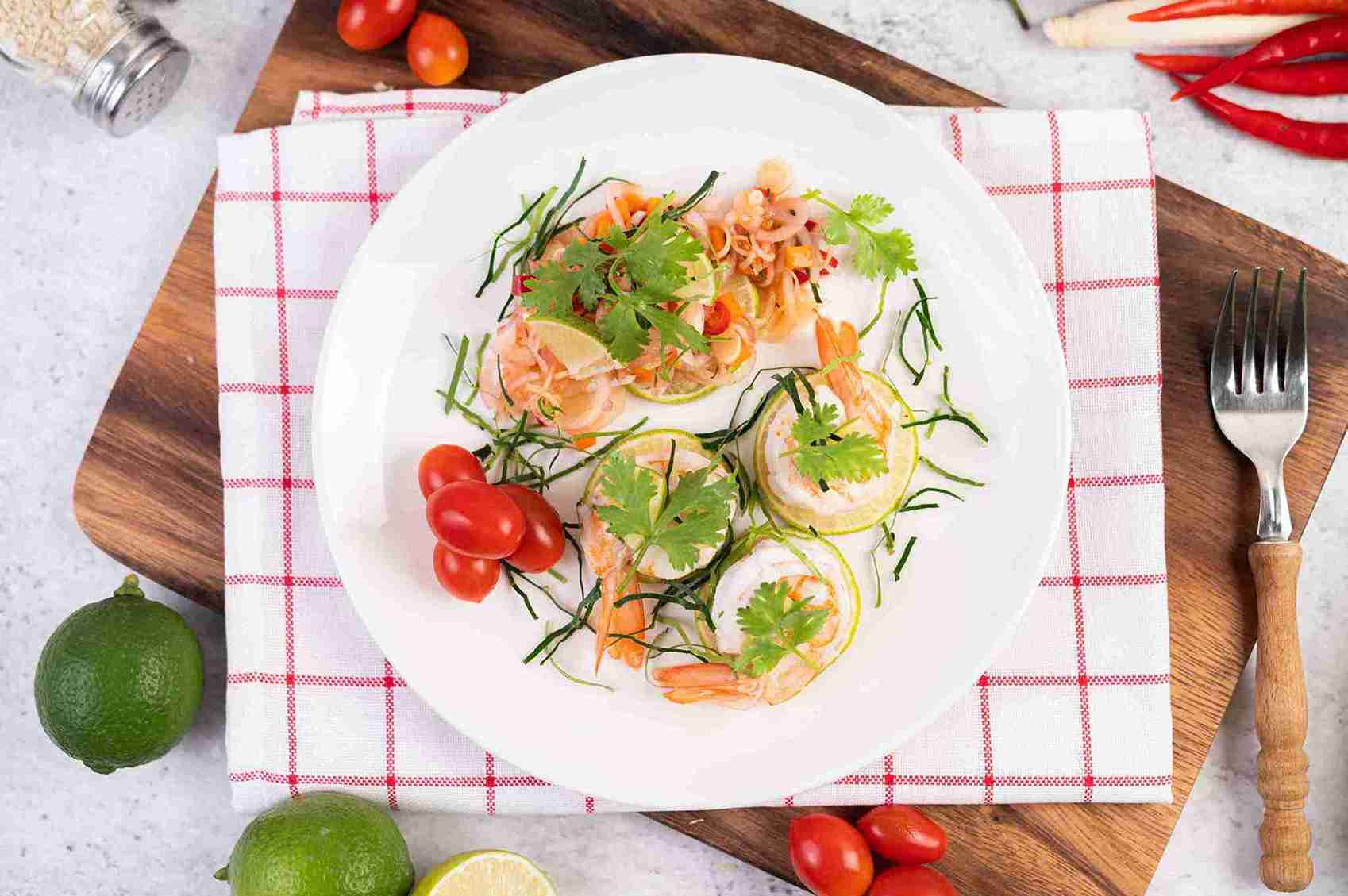 SHARE
SHARE
Getting to Know Garnish: The Key to a More Attractive Dish Presentation, Here Are the Tips!
Sovia
Have you ever seen a dish that looks so appealing you just can't wait to taste it?
In the culinary world, taste is important, but the visual presentation also plays a significant role in stimulating the appetite. One essential element that makes food more tempting is garnish.
Garnish is an additional element used to decorate food and make it look more visually appealing.
The word "garnish" comes from the French word "garnir," which means to adorn or complete.
In cooking, garnish is not just a decoration; it can also provide texture, color, and even aroma that enhance the overall flavor of the dish.
Garnishes can include fruit slices, vegetables, herbs, or even edible flowers. In addition to beautifying the appearance, garnishes can also add an extra touch of flavor that enriches the dining experience.
Therefore, understanding what garnish is and how to use it correctly is essential, especially if you're learning to cook professionally.
In this article, you will find a comprehensive discussion on garnishes, from their functions, types, to tips on creating an attractive garnish that complements the character of the dish.
Functions of Garnish in Dishes
The function of garnish goes beyond merely decorating food. Garnish serves several purposes that can enhance the overall quality of a dish. Here are some key functions of garnish:
1. Enhancing the Appearance of the Dish
The primary function of garnish is to beautify the presentation of the food. With the right selection, a garnish can make a dish look more appealing and appetizing.
The colors and shapes of the garnish can add a professional touch, making the dish look more vibrant.
2. Adding Flavor and Aroma
Garnish not only beautifies but also adds flavor and aroma. Some garnishes, such as mint leaves or parsley, can refresh the aroma and provide a more complex flavor dimension to the dish.
3. Indicating the Main Ingredients of the Dish
Garnishes also serve as a clue to the main ingredients of the dish. For example, a slice of lemon on grilled fish indicates the dish has a refreshing acidic taste.
This helps you better understand how the dish is paired with other ingredients.
4. Balancing the Flavors
Garnish helps balance the flavors of the dish. For example, a wedge of lime can add acidity to a dish that is too sweet. This helps create a more balanced and pleasing taste on the palate.
5. Adding Texture
Garnish can also enhance the texture of the dish. For instance, sesame seeds add a crunchy element that enhances the eating experience.
The combination of soft and crunchy textures makes the dining experience more enjoyable.
Read more: 5 Types of Table Set Ups Most Often Used in Restaurants! Which do you use?
Types of Garnish
Source: freepik.com
Garnish is not just for beautifying the appearance of the food. It can also add flavor and texture.
Generally, garnishes are categorized into two main types: simple garnish and composite garnish.
Simple garnish uses one or more ingredients, typically vegetables or prepared foods.
The most common examples of simple garnishes are slices of cucumber, croutons, or carved carrot pieces.
Composite garnish combines several ingredients into one presentation. This type is typically tailored to match the flavors and aromas of the main dish.
For instance, a combination of rosemary leaves and lemon slices on top of a steak.
In addition to these two types, garnishes can also be distinguished based on the ingredients used. Here are some examples:
1. Herbs and Fresh Leaves
Herbs such as parsley, basil, or rosemary are often used as garnishes to add a fresh look and distinctive aroma. These fresh herbs are perfect for a variety of dishes, from meats to salads.
2. Fruit and Vegetable Slices
Garnishes made from one or more vegetables, such as carrots, cucumbers, or bell peppers, are often used.
These ingredients can be carved or thinly sliced to create appealing colors and textures on the dish.
Fruits like lemon or oranges are also commonly used as garnishes, especially for seafood dishes.
3. Edible Flowers
Edible flowers such as roses, lavender, or butterfly pea flowers have become popular in the culinary world.
In addition to enhancing the visual appeal, these flowers also add unique flavors and aromas to the dish.
4. Crispy Ingredients
Croutons, fried onions, and sesame seeds are examples of crispy ingredients often used as garnishes.
These not only add texture but also enrich the flavor of the dish with a savory element that complements the overall taste.
5. Chocolate or Cream Decorations
Melted chocolate, caramel sauce, or whipped cream are common garnish choices for desserts.
Not only do these elements enhance the appearance, but they also provide a sweet flavor that tantalizes the taste buds.
Tips for Creating Attractive Garnishes
The right garnish can make a dish look more tempting and feel more complete. To make your dishes look even more attractive, here are some tips to follow!
1. Choose Fresh and Quality Ingredients
Use fresh ingredients for garnishes to ensure their colors and textures remain appealing when served. Wilted or overripe ingredients can make the food look less appetizing.
2. Pay Attention to Color Balance
Complementary colors can make the dish appear more lively. However, make sure the contrast is visually pleasing and does not clash with the main food color.
3. Match the Size of the Garnish with the Food Portion
Don’t let the garnish be too large or too small. The right size will make the plating look neat and balanced.
4. Don’t Be Afraid to Experiment
Feel free to experiment with shapes, cuts, or placements of garnishes. Simple ideas, like thin vegetable slices or sauce patterns, can make the dish more visually interesting.
5. Keep It Simple for Elegance
Overdoing the garnish can distract from the main dish. Sometimes, just one small, perfectly placed element can make the dish look elegant.
6. Choose Garnishes That Complement the Taste and Texture
Make sure the garnish is not only beautiful but also complements the flavor. Don't let the garnish overpower the taste of the main dish.
7. Use Creative Plating Techniques
You can create patterns with sauces, sprinkle small garnishes, or carve vegetables. These simple touches can make your food look more professional.
Read more: 10 Best Food Plating Techniques Like a 5-Star Restaurant
Conclusion
Garnish is an essential element in presenting dishes that are not only delicious but also visually appealing.
The function of garnish is to enhance the appearance while adding aesthetic value and improving the dining experience.
Whether it's simple garnish or composite garnish, each type has its role that can be adapted to suit the dish's needs.
When serving food, good kitchen management is also crucial. Utilize ESB Kitchen solutions, an integrated kitchen order management system, with features like serving time analysis, automated cashier and waiter updates, and easy finish order via barcode scanning.
Streamline your kitchen operations to be hassle-free and paperless. Maximize your restaurant’s kitchen with ESB Kitchen!
 SHARE
SHARE





